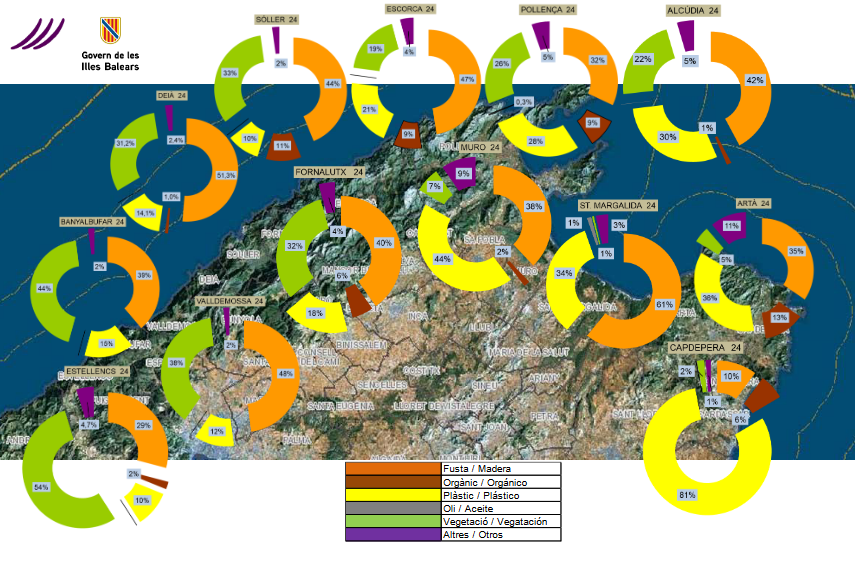Mallorca leads the collection with 12,716 kg, followed by Menorca with 8,275.60 kg, Ibiza with 5,520.33 kg and Formentera with 1,396.55 kg.
The Department of the Sea and Water Cycle, in collaboration with PortsIB, has worked together to ensure the cleanliness of the Balearic coastline. The waste collection campaign, which began in May – one month earlier than usual – and ended in September, has enabled a total of 27,908.48 kg of waste to be removed, with a daily average of 182.30 kg. In terms of geographical distribution, Mallorca stands out with 12,716 kg of waste collected, followed by Menorca with 8,275.60 kg, Ibiza with 5,520.33 kg and Formentera with 1,396.55 kg.
The effectiveness of this initiative has been made possible thanks to a fleet made up of 14 ‘beach’ and 7 ‘coastal’ vessels, which have operated continuously for one hundred and fifty-three days, with the aim of preventing pollution and ensuring the quality of the water on the beaches and coves of the archipelago.
TDB keeps you informed. Follow us on Facebook, Twitter and Instagram
The Coastal Prevention and Maritime Cleaning Service concludes the 2024 season with 27.90 tonnes of waste removed from the coasts of the Balearic Islands
In Mallorca, waste collection by municipalities has revealed that Felanitx leads the collection with 1,825.38 kg, followed by Palma with 1,103.30 kg and Manacor with 1,093.95 kg. Alcúdia and Santanyí have also presented significant figures, with 961.35 kg and 859.78 kg collected, respectively. In Menorca, the collection reached 2,183.65 kg in Ciutadella and 1,979.65 kg in Maó, while Es Mercadal contributed 1,720.40 kg. In Ibiza, Sant Josep collected 1,982.20 kg, and Sant Antoni collected 1,456.48 kg. Finally, Formentera contributed 1,396.55 kg to the clean-up.
Wood was the most notable material among the waste removed, representing 42.05% of the total. Plastic has occupied second place with 41.06%, followed by vegetation with 6.74%, other materials with 6.58%, organic matter with 3.10% and oils with 0.47%. It should be noted that this year the trend in the material collected has changed, with plastic moving into second position compared to the previous year.
In addition to the usual clean-up tasks, the brigades have dealt with 24 notices that included the collection of waste in specific coves. Of the warnings received, 15 came from the 112 emergency service and Maritime Rescue, while the remaining 9 were issued by institutions and individuals, related to the dispersion of fuel or the need for help. This collaboration with emergency services and institutions is essential.
